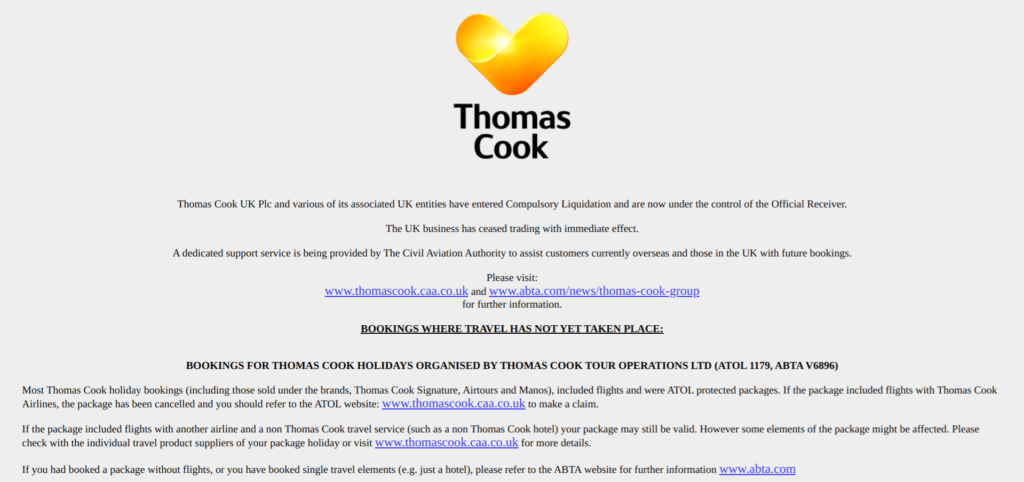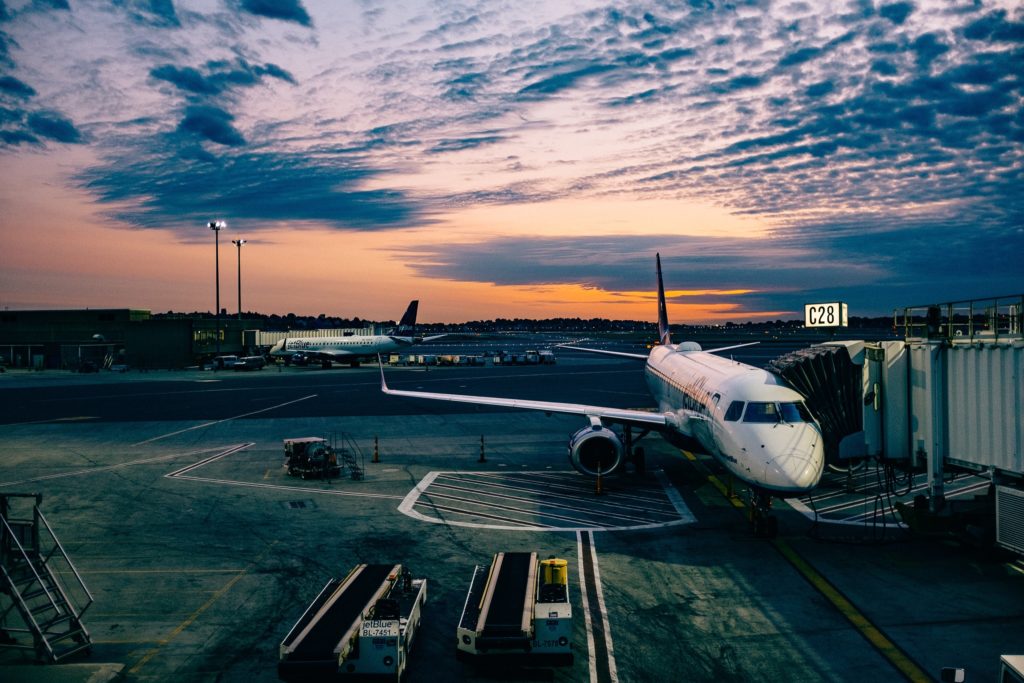Earlier this month, our PR team took a trip to London to visit #CommsCon19 where they were lucky enough to hear from some of the UK’s top PR professionals.
The talks were full of interesting information such as how to develop a digital PR strategy, how PRs should communicate with journalists and how to communicate effectively during a crisis.
One of the sessions was based on perhaps the biggest crisis to emerge this year; the liquidation of the global travel group, Thomas Cook.
Our team heard from Richard Stephenson and Will Nathan from the Civil Aviation Authority (CAA). Both Richard and Will played a pivotal role in the CAA communications operation during the Thomas Cook collapse.
From Monarch to Thomas Cook
The CAA is the regulator for civilian airlines and it oversees Air Travel Organisers’ Licensing (ATOL), which is the government-run financial protection scheme for package holidays.
Playing an important role when things go wrong, this wasn’t the first time that the CAA had needed to respond to a global crisis in recent years. Back in 2017, Monarch entered administration, leaving over 100,000 holidaymakers stranded abroad.
CAA was responsible for passenger repatriation and communicating the operation to the public. They worked with the government to secure a fleet of more than 30 aircraft, flying to more than 30 airports to bring holidaymakers back to the UK at no cost to them.
The communications team worked tirelessly day and night to ensure that everyone who needed information, had it. But, how did CAA build on and improve their communications operation when history repeated itself with Thomas Cook?
Operation Matterhorn and the single source of truth
After the collapse of Monarch, the CAA team used the experience to begin planning in case an even larger holiday company went under. Expecting this to be an enormous task, they named this scenario ‘Operation Matterhorn’ – and the plans had to be set in motion almost as soon as they were made.
When Thomas Cook announced its liquidation in September 2019, there were 150,000 passengers stranded abroad along with 360,000 future bookings which became invalid. In response, CAA launched its largest peacetime repatriation. ‘Operation Matterhorn’ had begun.

Central to the plan, Operation Matterhorn had three messages to communicate:
- If you’re in the UK, don’t go to the airport
- If you’re on holiday, don’t panic or try to come home
- Use the single source of truth
The single source of truth was one of the key parts of CAA’s communications strategy during the Thomas Cook crisis. This was a dedicated website which included policy information for passengers abroad and was where all Thomas Cook customers, whether at home or abroad, were directed to. It was the only place where people could be guaranteed to get the accurate information they needed to know, it was the single source of truth that holidaymakers, journalists, hoteliers and politicians could all rely on.
In a crisis, rumour, misreporting and gossip can spread like wildfire and things get even more complicated when people spread deliberate falsehoods. To cut through this, the single source of truth can be tremendously important and, in this situation, it was key.
Richard Stephenson pointed out how, in the first few hours, this website was crucial in communicating with Thomas Cook customers. But, they weren’t the only people who needed information. Thomas Cook employees, UK airports, foreign airports, friends and family of customers, airlines and hotels also needed to know what was going on.
How else did they communicate?
One of the key aims for CAA during the Thomas Cook crisis was ensuring that they were in control of the media narrative. They had to take control of the story and ensure that everything was communicated in a truthful and transparent way.
One way they did this was via traditional media such as broadcast. They tackled this by having their very own satellite truck which allowed them to communicate with broadcast studios from wherever they were, giving live updates whenever necessary.
Additionally, they ensured that a press release was issued every single day of the 2-week operation which communicated all the figures and statistics in a transparent way.
They also had a dedicated team of people who managed press office calls, multi-channel messaging and social media.
But throughout all of this, everyone was directed to the single source of truth for the most reliable information.
Using social media in crisis communications
Throughout the 2-week operation, CAA received 30,000 social media mentions so they definitely recognised the power of social media when it came to their crisis communications. They developed a full social media strategy and tapped into every social media channel to target as many people as possible and amplify their message.
However, despite the obvious benefits of using social media in this situation, there were also many risks involved.

As we’ve previously explored, it’s important to stick to a plan. In a crisis, it’s easy to lose your head and make rash decisions, and this did occur during their campaign.
Will Nathan admitted that CAA didn’t fully stick to their social media plan and they made the mistake of not taking all of their audiences into account. One slightly over enthusiastic tweet encouraging people to watch their chartered flights in real time online was taken by some as proof that they weren’t taking things seriously and being too jovial while holidaymakers were stranded.
Looking back, they now recognise the danger of not thinking things through and acting on creative ideas in the heat of the moment; you have to have a plan and stick to it!
“Getting the result that every single person wanted”
By the end of Operation Matterhorn, CAA had successfully organised for 140,000 passengers to be brought back home by 145 aircraft.
But as well as doing the obvious and bringing people home, they also made sure that they handled their communications strategy sensitively and respectfully. They recognised the importance of appreciating the bigger picture; a beloved British institution had gone into liquidation leaving many people jobless, so they had to put themselves in those people’s shoes.
And it wasn’t just Thomas Cook staff affected. The toll on the personal and professional lives of CAA communications staff also had to be considered, as they were working tirelessly, 24/7, for a 2 week period whilst the crisis was managed.

Planning for the future
After dealing with the administration of two major airlines, CAA can safely say that planning for future disasters is something all communications teams need to do.
Richard recommends thinking ahead and making sure you give yourself the time and thinking space to plan, before the crisis hits you. Additionally, he emphasises the importance of looking after your team, pointing out that everyone has different resilience levels which need to be considered. When they were creating their plan following the collapse of Monarch, they made it clear to their team that they weren’t expected to be ‘heroes’, slogging away for endless days no matter the personal toll. Instead, they made sure they were prepared with a plan and the resources they’d need to successfully deal with a crisis.
We all hope that we won’t be in a situation where we have to work on crisis communications, especially on a national or even international level. But the reality is, it could happen to anyone. So, having a plan in place, and then sticking to it, is the best approach to ensure that you give the result that everyone is hoping for.



